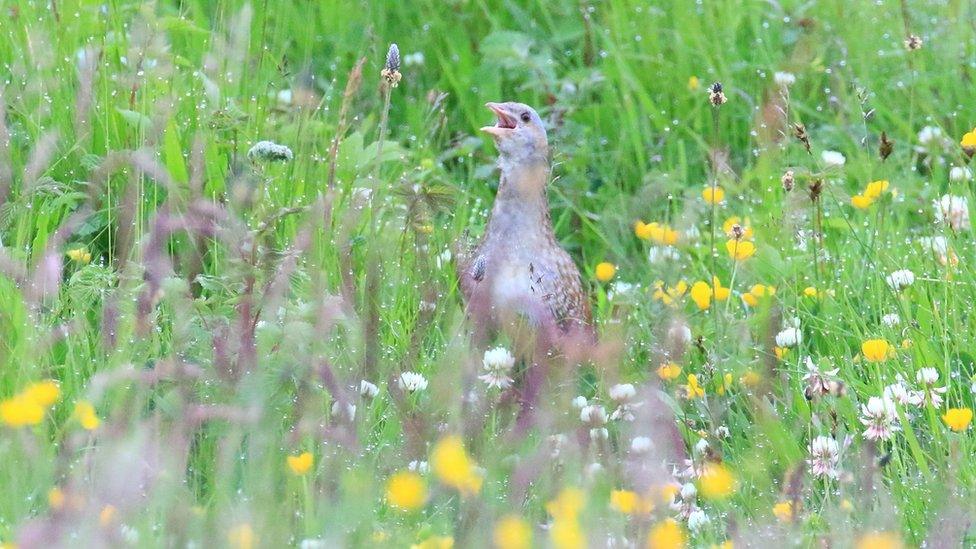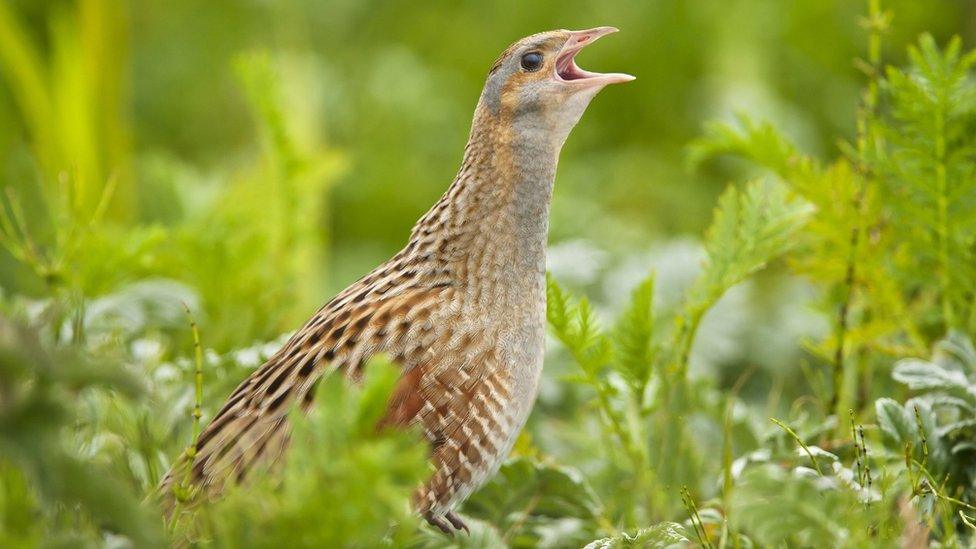Corncrake: Two endangered Corncrake pairs recorded on Rathlin Island
- Published

A calling corncrake, the endangered bird species found on Rathlin Island
Corncrake pairs have been spotted on Rathlin Island for the first time in 30 years.
Two pairs of the secretive creatures were recorded by the Royal Society for the Protection of Birds (RSPB) on the island , which is the only place in Northern Ireland home to the species.
The shy bird is red-listed by the RSPB, meaning it is of high conservation concern.
Two breeding males were spotted in separate sites across the island.
Liam McFaul, Rathlin Island's RSPB warden, said it is the first time since the 1980s that the island has two calling corncrakes.
"The birds have two broods and the second brood will be hatching later in July," Mr McFaul said.


What is a corncrake?
A member of the rail family, corncrakes (crex crex) are shy, pigeon-sized birds related to moorhens and coots, which breed in Ireland and Britain, and across central Europe migrating to Africa in winter.
They like to settle in early growing tall vegetation, including nettles, cow parsley and irises.
There they stay mainly hidden, raising a family in the tall grasses which provide shelter from predators for young corncrakes.
Changes to farming methods, including hay being mowed earlier in the year, have been blamed for the decline.
Farmers are encouraged to cut their fields later in the season, and to cut from the centre of fields outwards to give the birds the chance to escape.

Of the two Rathlin sites on which calling corncrakes have been recorded, one is managed by the RSPB and the other is private land, owned by famer, Richard Green.
"The way we farm, we're sensitive to nature and the birds and we try to do whatever we can to help", Mr Green said.
"To hear that this year there are two pairs, one of which is on our land, is great. It shows us we must be doing something right for them."
The RSPB gathered nettle roots from across Northern Ireland and ferried them to Rathlin to plant around the edges of hayfields and brambles as part of their Giving Corncrakes a Home project.
The birds will migrate to Africa in August or September after the second brood hatches later this month.
Corncrakes are easily spooked, so members of the public are asked not to try and get close.
- Published8 May 2018
